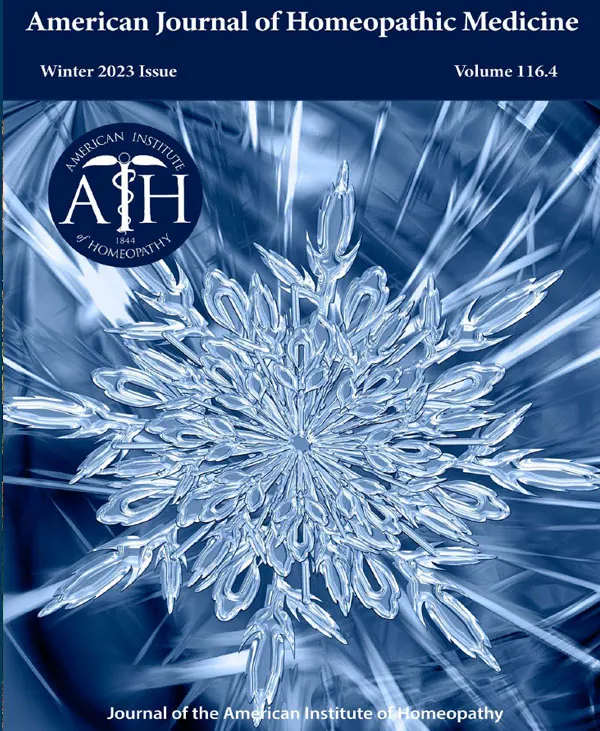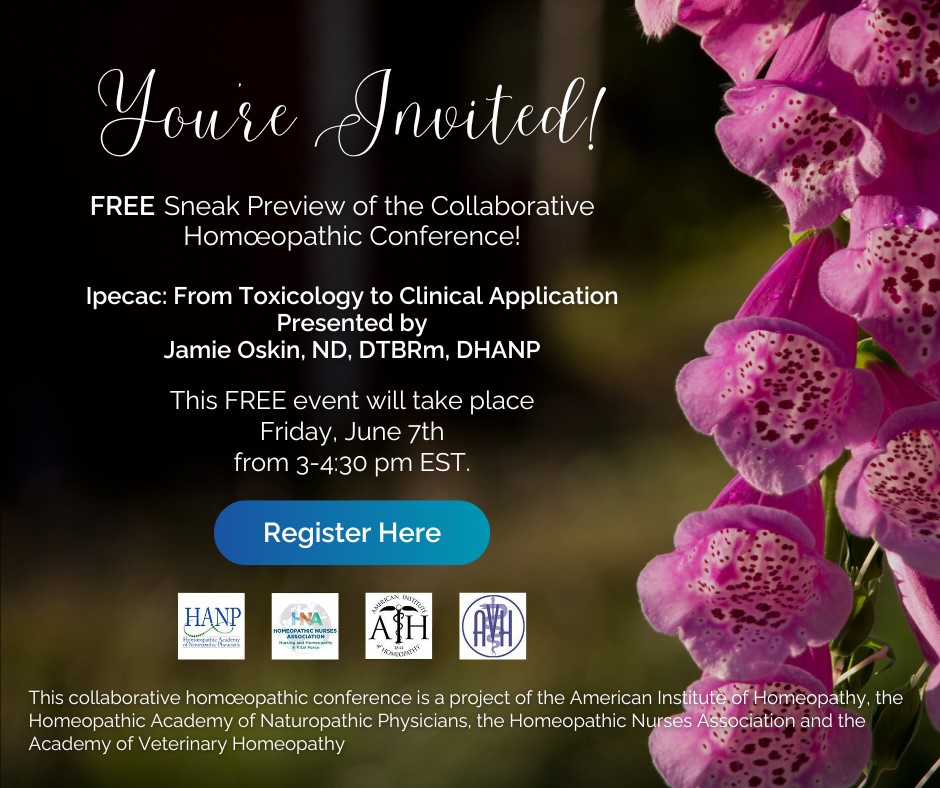
Some Common Remedies in Pneumonia and COVID-19:
with Indications Especially for Characteristics of Cough
Keywords: cough, pneumonia, Covid-19, Aconitum napellus, Antimonium tartaricum, Arsenicum album, Belladonna atropa, Bryonia alba, Carbo vegetabilis, Carboneum oxygenisatum, Ferrum phosphoricum, Gelsemium sempervirens, Hyoscyamus niger, Ipecacuanha, Kali bichromicum, Kali carbonicum, Nux vomica, Phosphorus Pulsatilla nigricans, Sambucus nigra, Senega, Sulphur
Introduction
It has been observed that COVID-19 is a unique combination of the symptomatology of influenza and pneumonia. While it is undoubtedly true that each new epidemic is different from others that came before it, the collection of cases treated by homeopathic practitioners around the world does point to a predominance of certain remedies used much more frequently than others. The homeopathic medications below are a short list of those remedies, especially as some of them have been verified by the author himself as helpful in COVID-19. It is obvious to the seasoned homeopathic practitioner that the descriptions of the coughs below form only a narrow field on which a prescription may be based, and it is a desideratum of proper case taking to reveal characteristic or keynote symptoms. This, being a very short index useful for snapshot prescribing, can be a pointer to a remedy which may need confirmation in the materia medica. However, when the case does not reveal other general characteristic symptoms, a patient with disease of significant intensity will usually have strong modalities and concomitants that may be found here.
The focus on cough as a primary symptom is important as the severity of COVID-19 cases is determined by the extent of lung involvement as the disease progresses. Undoubtedly, preventing this progression should be the primary task of homeopathic treatment, the effectiveness of which has been amply documented in the past as modifying positively both morbidity and mortality of epidemic disease. (See previous issue for the article on epidemic disease.)
Certain cough remedies that might be found useful as we see more cases have been left out; such as, Lachesis muta, Cina, Causticum, Spongia tosta, Hepar sulphuris, etc. (These and others can be found in Clarke’s Prescriber.) The reader is encouraged to keep those remedies in mind from J.H. Clarke’s Prescriber as well as any remedy that might fit a specific case.
Please note the materia medica snapshot at the end on Carboneum oxygenisatum for its use in COVID 19. Three cases of the author responded well to this remedy for acute COVID-19-related dyspnea, each improving soon after the first dose of Carboneum oxygenisatum 200C:
- A COVID-19-positive, asthmatic, 74-year-old lady, whose home pulse oximeter indicated a depressed oxygen saturation of 89%, was improved the following day (with a pulse oximeter reading of 96%); she received another three doses daily for two more days, and did well subsequently.
- A 45-year-old woman, COVID-19 positive, began to have mild dyspnea with constriction in the chest. After just one dose her symptoms resolved by the next day.
- A 58-year-old woman with comorbidities and symptoms of COVID-19 had chest constriction and mild dyspnea. After one dose she was much better by the next day. She continued Carboneum oxyg. 200 three times a day for two additional days after which her symptoms resolved completely.
Groups: This is a loose classification that the author devised. Group I remedies have been the most frequently effective in COVID-19 cases; in all stages of the disease dry cough predominates. Group II remedies are less common in COVID-19 and are indicated more often in the first stage of the disease (except Pulsatilla which may be needed at any stage). Group III remedies are also less common in COVID-19, but they are especially indicated in the first (incipient) stage of the disease and are differentiated from one another by the sudden onset and restlessness, which is prominent in Aconitum and Belladonna; whereas in Ferrum phosphoricum the disease is slower to develop with less restlessness and a desire to be left alone. (See a more detailed description in D.M. Borland’s Pneumonia booklet.) Group IV remedies are grouped based on the severe degree of their suffocative cough: both Sambucus and Ipecacuanha are quite common in children, Antimonium tartaricum is common in both children and the elderly, Senega is most common in the elderly, both Carbo vegetabilis and Carboneum oxygenatum are especially helpful in a serious or critical state, while Hyoscyamus is common in the elderly and alcoholics. Group V remedies are just a few possible choices in the post COVID-19 or convalescent stage of the disease (Carboneum oxygenatum, Antimonium tartaricum, Carbo vegetabilis, Arsenicum album might also be needed).
Remedies
Group I: Bryonia alba, Arsenicum album, Phosphorus
Group II: Gelsemium sempervirens, Pulsatilla nigricans, Nux vomica
Group III: Ferrum phosphoricum, Belladonna atropa, Aconitum napellus
Group IV: Sambucus nigra, Ipecacuanha, Antimonium tartaricum, Carbo vegetabilis, Carboneum oxygenisatum, Senega,Hyoscyamus niger
Group V: Kali carbonicum, Kali bichromicum, Sulphur
(Material from The Prescriber, by J.H. Clarke. Excerpted, revised, reformatted with additions from other sources referenced below.)
Cough
According to General Characteristics (with [prominent] modalities and concomitants)
Group I
Bryonia alba: Dry cough, on waking, on moving about, in the morning; (DRY COUGH PREDOMINANTLY); some expectoration at first (sometimes bloody), afterwards dry, with sharp pains in chest
WORSE on entering a warm room;
BETTER cool air and cool applications
BETTER lying on the affected side
Arsenicum album: Dry Cough, spasmodic, ending in bringing away a little phlegm; coming on in the night (12 to 1 am typical), waking from sleep in fright; patient must sit up
WORSE cold and stormy weather
BETTER keeping the body warm and head cool
Phosphorus: Cough, dry or with scanty rusty sputa; night and day; provoked by tickling low in the trachea, and by a feeling of rawness and soreness in trachea, bronchi, and whole chest; accompanied and characterized by a hoarse barking sound and by a peculiar and distressing weight on the chest; severe constriction during the cough across the chest
WORSE lying on the left side
Hoarseness, induced by a very deep inspiration
Stitching pain on the left side,
BETTER by lying on the right side
Group II
Gelsemium sempervirens: Dry cough with fluent coryza, soreness in chest; with dullness, dizziness and drowsiness; chilliness up and down the spine
WORSE in warm weather Heaviness in the head
BETTER after profuse urination Pulsatilla nigricans: Cough, loose, productive by day, dry, tickling cough at night while lying down and when warm in bed
WORSE at night and when heated
BETTER with windows open and moving slowly
Nux vomica: Cough, dry, tickling, fatiguing, accompanied with roughness, rawness and scraping of the throat and chest. Coryza, thin, excoriating, fluent during the day and stopped up at night
WORSE in the evening after lying down, or very early in the morning
WORSE during the slightest draft/uncovering
BETTER hot drinks
Group III
Ferrum phosphoricum: Cough, acute, short, spasmodic, and very painful; profuse expectoration of almost pure blood; first stage of any inflammatory condition; oppression of the chest; suddenly a loose cough, painless indoors, painful in open air
WORSE on bending over or touching the larynx Very painful cough
WORSE on lying Stitches in the chest
WORSE on deep respiration
Belladonna atropa: Dry cough, irritative laryngeal, paroxysmal; heat and redness of face and sparkling eyes, dilated pupils; feeling of soreness in larynx, as if internally hot and sore, this soreness is felt when pressing the larynx externally; oppression and heat in chest, dyspnea
PROVOKED by tickling in larynx as if dust were at the back of it
WORSE evening and early night, induced by exertion
WORSE lying down especially on the affected side, or from very deep respiration
WORSE from the slightest movement in bed
Aconitum napellus: Cough, short, dry, irritative, sudden onset; loud, barking
DURING sleep; with agonizing fear or danger of suffocation, restlessness
BETTER lying on the back slightly elevated
Group IV
Sambucus nigra: Cough, suffocative, turning blue and gasping for breath, of children, (DRY COUGH MORE COMMON)
ACCOMPANIED with profuse sweating
WAKING them up in the middle of the night with restlessness and throwing about arms
Ipecacuanha: Cough, spasmodic, suffocative and blue in the face; (DRY COUGH MORE COMMON) in children with stiffness of facial muscles, accompanied with nausea unrelieved by vomiting or vomiting while coughing without nausea; with catarrh
WORSE by effort
BETTER warmth
Antimonium tartaricum: Cough, compels the patient to sit up, is moist and rattling but without expectoration; sickly, sunken, pale, bluish or twitching of face, covered with cool sweat; coarse rattling in the chest; nose pointed, nostrils widely dilated or dark or with fan like motion; suffocation and drowsiness
WORSE getting warm in bed
BETTER by sitting up
Carbo vegetabilis: Cough with dryness in larynx as if vapors of sulphur were in trachea; (DRY COUGH MORE COMMON) at times violent with little expectoration or sputa greenish and tough or yellow and purulent; less often watery, and offensive
WORSE in evening and before midnight; by cold and when eating or drinking cold things Abdominal distention impeding respiration,
BETTER after eructations; Cold and sweaty,
BETTER by being fanned
Carboneum oxygenisatum 9: Cough with rattling of mucus in air passages; bloody or frothy mucus raised; dryness and scraping in the throat, causing cough; expired air feels cool to back of observer’s hand; breathing stertorous, slow; sense of suffocation. Great coldness of surface, hands icy cold
BETTER FRESH AIR – Marked amelioration, especially of heaviness of chest, in fresh air
WORSE on breathing, feeling load on chest
Senega: Irritative, shaking cough of old people; expectoration copious, viscid, mucoidal, (DRY COUGH MORE COMMON), like white of an egg or yellow, choking ends in sneezing; great soreness in the walls of chest
WORSE especially during repose and sitting
Hyoscyamus niger: Cough, dry at night, constant (DRY COUGH MORE COMMON)
WORSE when lying down, eating, talking, or singing
BETTER by sitting up
Group V
Kali carbonicum: Cough, spasmodic, coming on between 2 and 3 am; (CAN BE DRY OR LOOSE); stitches in the chest, darting around suddenly
WORSE lying on the painful side,
BETTER by sitting up, bent forward
Kali bichromicum: Cough, dry, barky, or wheezing and panting, then violent cough, with retching and expectoration of stringy, tough, viscid mucus; hoarseness and rough voice
WORSE undressing; in the morning on waking; 2 to 3 am
BETTER getting warm in bed; lying down
Sulphur: Cough from rawness in larynx, (CAN BE DRY OR LOOSE); violent spasmodic cough with copious expectoration of mucus.
WORSE especially in the morning Respiration difficult and oppression of chest,
WORSE bending arms backward Causing headache in occiput,
WORSE at night in bed before falling asleep
References
- Pulford, A and DT. Homoeopathic Leaders in Pneumonia. B. Jain. 2004.
- Rabe, RF. Daily Reference on Homoeopathic Therapeutics. B. Jain. 2004
- Woods, HF. Essentials of Homoeopathic Prescribing. The Homoeopathic Publishing Company.
- Neatby, EA, Stonham TG. A Manual of Homoeo-therapeutics. An Introduction to the Study and Practice of Homoeopathy. Reprint of 3rd Edition. Foxlee-Vaughan Publishers. London. 1987.
- Lee, JE and Clark, GH. Cough and Expectoration-A Repertorial Index of Their Symptoms. New York. 1884.
- Clarke, JH. The Prescriber. A Dictionary of the New Therapeutics. American Edition. Boericke & Tafel. Philadelphia. 1898.
- Clarke, JH. A Dictionary of Practical Materia Medica. The Homoeopathic Publishing Company. London. 1902
- Hering, C. Condensed Materia Medica. Revised. Farrington, EA. Boericke & Tafel. Fourth Edition. Philadelphia. 1894
- Allen, TF. The Encyclopedia of Pure Materia Medica. A Record of the Positive Effects of Drugs upon the Healthy Human Organism. Boericke & Tafel. Philadelphia. 1874.
Carboneum oxygenisatum, p. 613: Felt as if a stream of warmth passed from the abdomen into the chest, and thence into the head; it roared in his ears, it affected his respiration; he rose, and after tottering a few steps, fell down, attacked by sudden vertigo ….
 About the author: Alex Bekker, MD, was introduced to homeopathy by Alain Nauda over thirty-five years ago and has been a student ever since. He has a private General Practice specializing in homeopathy and is an Adjunct Professor at UNTHSC Fort Worth, Texas. He is the current Editor-in-Chief of the American Journal of Homeopathic Medicine.
About the author: Alex Bekker, MD, was introduced to homeopathy by Alain Nauda over thirty-five years ago and has been a student ever since. He has a private General Practice specializing in homeopathy and is an Adjunct Professor at UNTHSC Fort Worth, Texas. He is the current Editor-in-Chief of the American Journal of Homeopathic Medicine.
About the AJHM
The American Journal of Homeopathic Medicine (AJHM) is a peer-reviewed scientific journal, specifically intended to meet the needs of physicians involved in the specialty of homeopathy. The editor invites original manuscripts, feature articles, research reports, 'Homeopathic Grand Rounds' cases studies, abbreviated case reports for 'Clinical Snapshots,' seminar reports, and position papers that focus on homeopathy, as well as book reviews and letters to the editor. Click below to subscribe to the Journal.
Latest Issue of the AJHM

AJHM – Winter 2023
Volume 116 Number 4
Table of Contents
- Editorial: In this Issue
- Homeopathic PuZZle?
- A Case of Erectile Dysfunction and Anejaculation in a Diabetic Patient
- Iron and Its Salts: Materia Medica and Illustration
- Suppression in the Organon
- An Appreciation of Jacques Jouanny’s Life and a Review of His Opus “The Essentials of Homeopathic Therapeutics”


